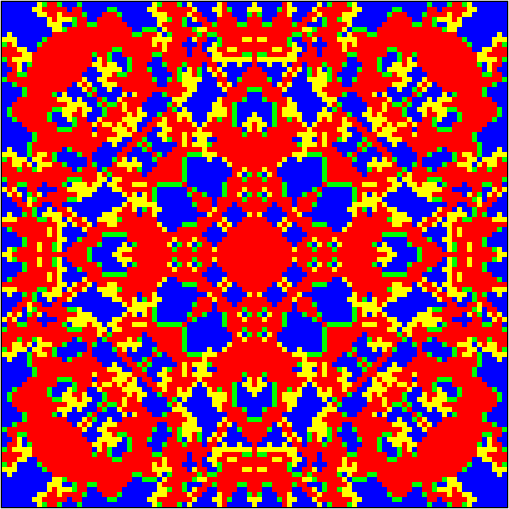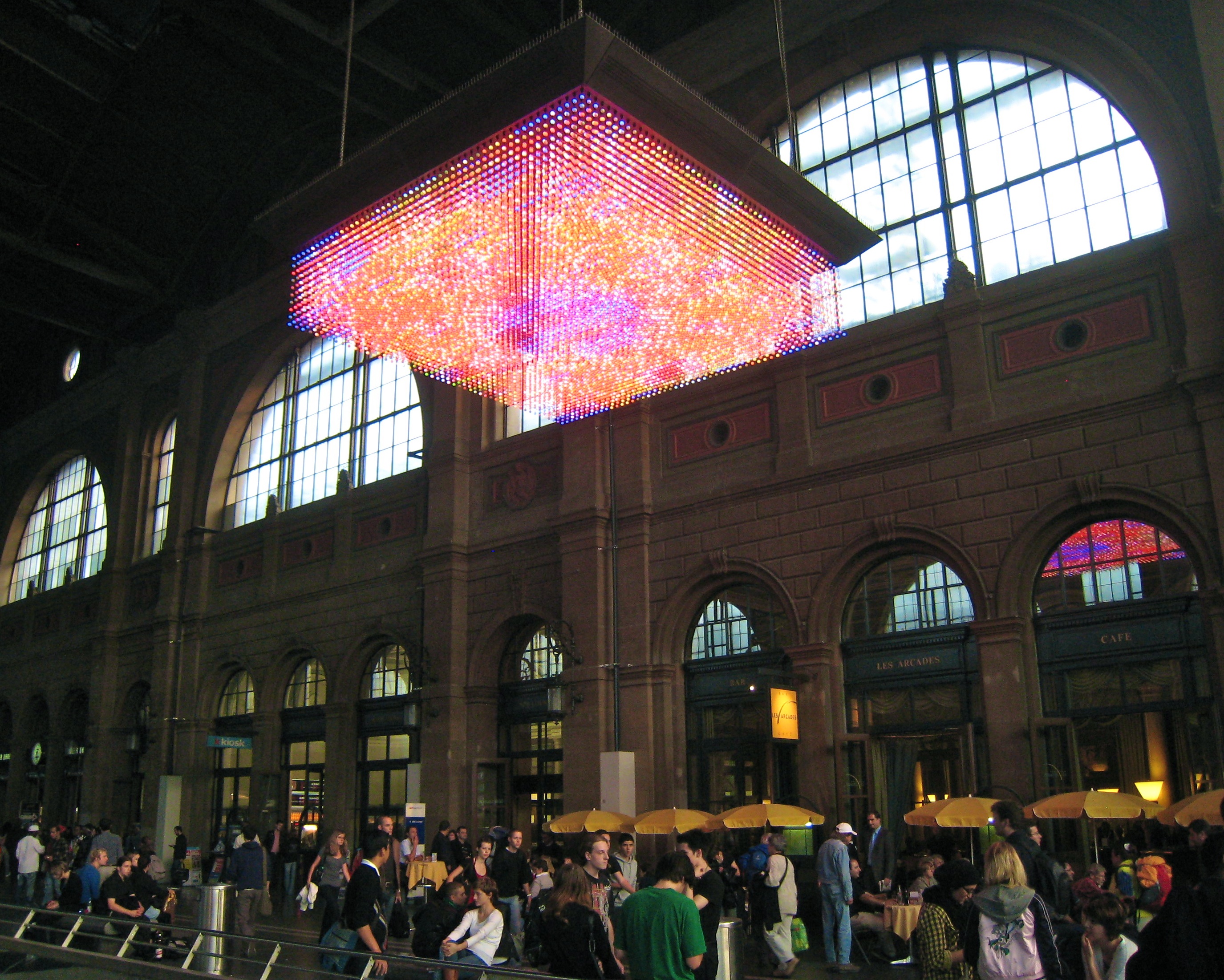Template:EvoLudo/Highlights: Difference between revisions
No edit summary |
m (fix layout for Minerva) |
||
| Line 1: | Line 1: | ||
{| | {| | ||
|- valign="top" | |- valign="top" | ||
| [[File:Kaleidoscope Prisoner's Dilemma (t=600).png | | style="width:180px; padding-right:20px; padding-bottom:20px;" | [[File:Kaleidoscope Prisoner's Dilemma (t=600).png|link=2×2 Games]] | ||
| | | | ||
===[[2×2 Games|Classics]]=== | ===[[2×2 Games|Classics]]=== | ||
| Line 7: | Line 7: | ||
|- valign="top" | |- valign="top" | ||
| [[File:Spatial Ecological PGG - Chaos, symmetric (t=6000).png | | style="width:180px; padding-right:20px; padding-bottom:20px;" | [[File:Spatial Ecological PGG - Chaos, symmetric (t=6000).png|link=Evolutionary Games and Population Dynamics]] | ||
| | | | ||
===[[Evolutionary Games and Population Dynamics|Modern]]=== | ===[[Evolutionary Games and Population Dynamics|Modern]]=== | ||
| Line 13: | Line 13: | ||
|- valign="top" | |- valign="top" | ||
| [[File:NOVA Display, Zürich (side).jpg | | style="width:180px; padding-right:20px; padding-bottom:20px;" | [[File:NOVA Display, Zürich (side).jpg|''EvoLudo'' on the NOVA display in the main train station in Zürich,Switzerland.]] | ||
| | | | ||
===[["Evolution" Installation on NOVA, Zürich|Arts]]=== | ===[["Evolution" Installation on NOVA, Zürich|Arts]]=== | ||
Revision as of 18:35, 11 March 2020

|
ClassicsClassic patterns generated by the spatial prisoner's dilemma and first published by Nowak, M. A. & May, R. M. Nature 359 826-829 (1992). Spatial structure enables cooperators (blue, green) survive under conditions where otherwise defectors (red, yellow) would take over. Through spatial clustering cooperators interact more frequently with other cooperators and reduce exploitation by defectors. |

|
ModernSpatial heterogeneity promotes cooperation based on different types of pattern formation processes driving the density distribution of cooperators (green) and defectors (red). Individuals can migrate (diffuse) in order to populate empty territories (black). Slow diffusion of cooperators fosters aggregation in highly productive patches (activation), whereas fast diffusion enables defectors to readily locate and exploit these patches (inhibition). These antagonistic forces promote co-existence of cooperators and defectors in static or dynamic patterns, including spatial chaos of ever changing configurations |

|
ArtsInstallation "Evolution" on the NOVA, the world's largest true 3D display in the main train station in Zürich, Switzerland. The installation was created in collaboration with media artist Chandrasekhar Ramakrishnan and is based on the EvoLudo simulation toolkit. “Evolution” was presented in September 2009 in honour of Darwin's bicentenary and has now become part of the permanent collection. The NOVA display is a 5×5×1m cube of 25,000 LED lights and displays the competition of cooperators (blue, green) and defectors (red, yellow) in the prisoner’s dilemma in 3D unfolding as an ‘evolutionary kaleidoscope’. |